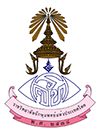ANGLE CLOSURE: A TO Z
Updated 2016-11-22 14:55:00
A population-based study from South India reported 22% of PACS patients progressed to PAC and 29% of PAC patients progressed to PACG over 5 years.
Mechanisms of angle closure
Mechanisms responsible for angle-closure are described in terms of anatomical location of obstruction to aqueous flow.
• Pupillary block mechanism
• Anomalies at the level of the iris and/or ciliary body (“Plateau iris configuration”)
• Anomalies at the level of the lens
• Anomalies posterior to the lens (e.g. aqueous misdirection syndrome)
New anatomical risk factors for PAC
• Anterior chamber: width, area and volume
• Iris: thickness, area, and curvature
• Lens: lens vault
New altered physiology/dynamic factors
• Iris: change in volume with dilatation
• Choroid: choroidal expansion/effusion
• Ciliary body: anterior rotation
Management of PAC:
1. Laser peripheral iridotomy (LPI)
LPI only treats one of the angle-closure mechanisms (pupillary block); non-pupillary blockage PAC may remain.
The Zhongshan Angle-Closure Prevention Trial
Objective: to determine longitudinal changes in angle configuration in eye with PACS treated by LPI.
Conclusions: angle width increased markedly after LPI, remained stable for 6 months, and then decreased significantly by 18 months after LPI.
2. Clear lens extraction for PACG
Clear lens extraction (CLE) should be considered in patients with PACG especially with hyperopia, and/or a thick and anteriorly vaulted lens. However, CLE is not an established conventional treatment and may even be controversial.
Challenges for CLE:
• Shallow anterior chamber
• Large bulky lens
• Iris atrophy secondary to ischemia
• Associated zonular weakness
Benefits
• Reverse anatomical predisposition and defect
• Reduce IOP and IOP-lowering drugs
• Prevent pupillary block and acute angle closure
• Prevent progression of disease (based on IOP reduction)
พญ.นพวรรณ อุรัมภรณ์
ผศ.พญ.อนิตา มนัสสากร
 RCOPT
RCOPT